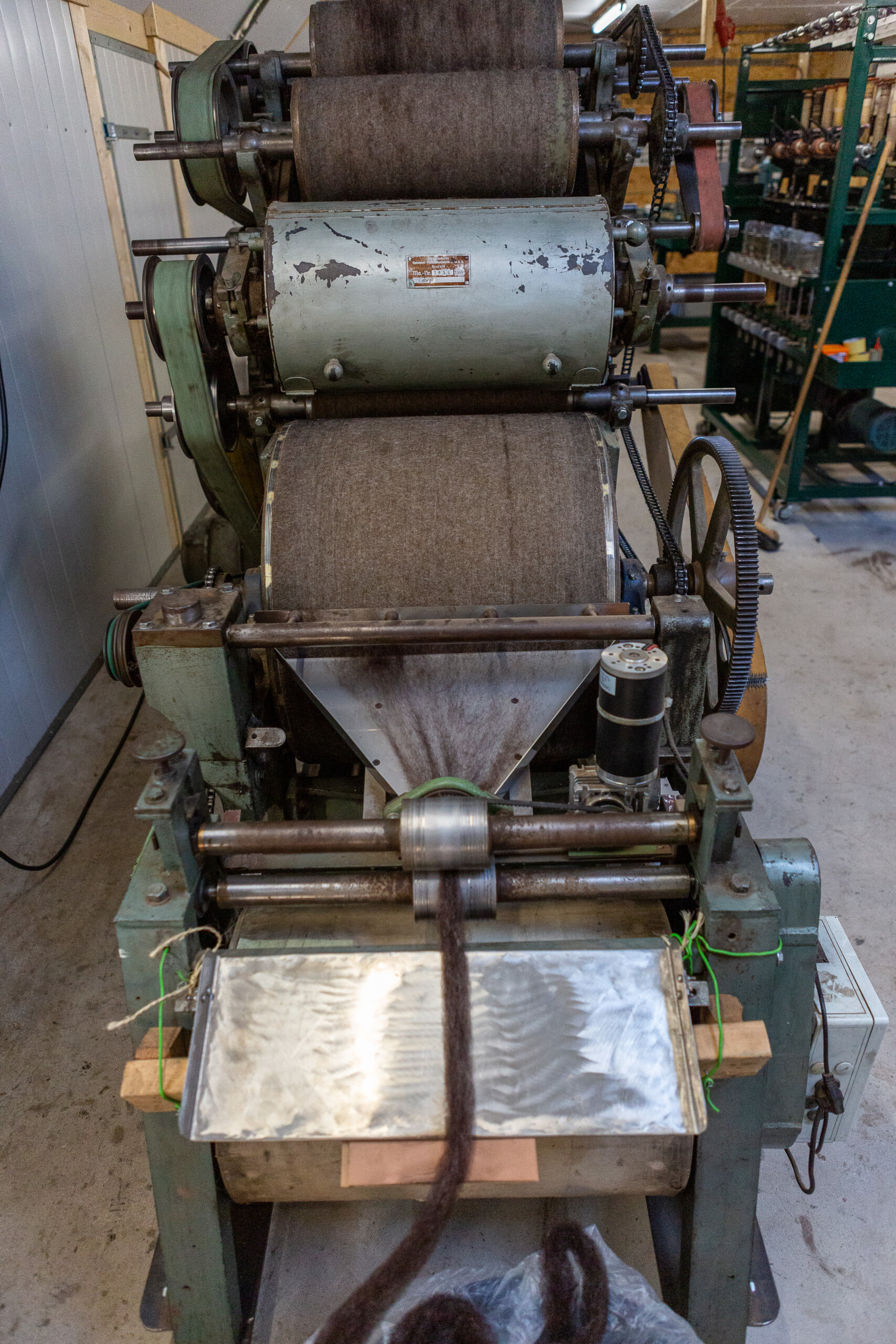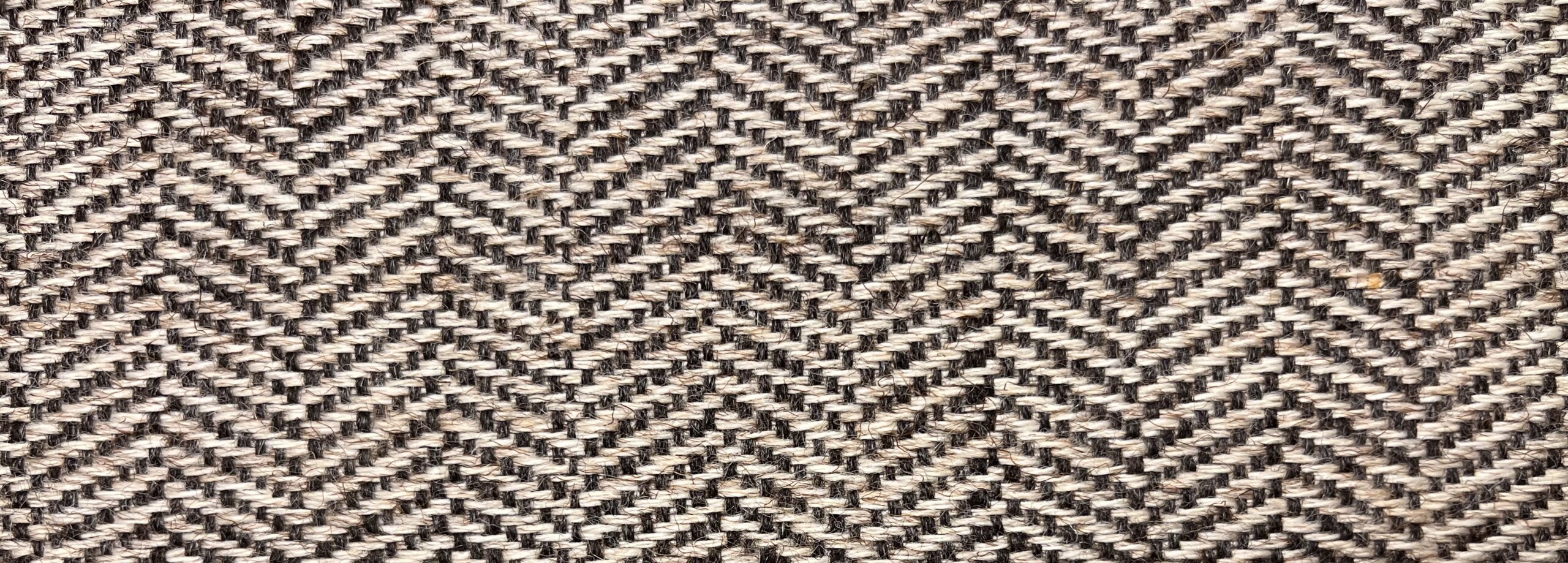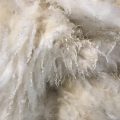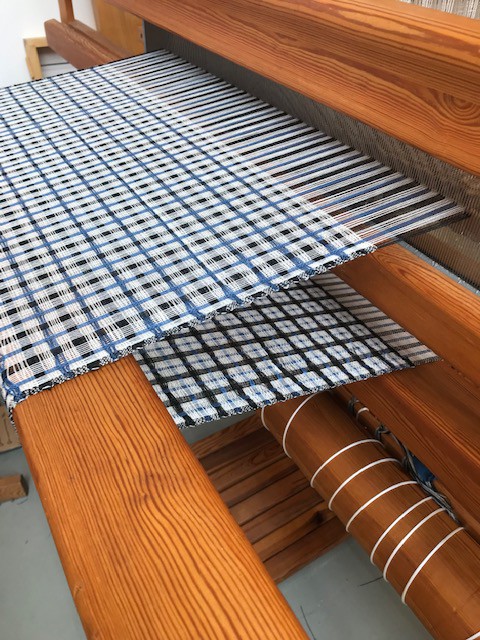Tweed fabric is iconic and we easily refer to a classic woolen twill as ‘tweed’ but what is ‘tweed’ exactly? And why do we call it ‘tweed’?
In a detailed study called ‘Tweed’ by Fiona Anderson*, it is explained that tweed first emerged in the 1830s. Tweed cloth, at that time, was usually of medium weight and made from coarse wool in a twill weave.
A key characteristic of tweed is its ‘hairy’ appearance, as you can see in my handwoven barley corn tweed here on the right. According to Fiona Anderson this is because tweed is made from yarns spun “on the woolen system, which involves carding but not combing.”


In the spinning mill of ‘Alles Wol’ near Hoogeveen the carding machine (here on the left) disentangles the raw wool so that the fibres all lie in the same direction before spinning.
If the wool would subsequently be combed all the other fibers still present in the wool, such as hairs and kemp, would be combed out. This would result in a smoother and more even surface (called a worsted yarn) but this is not what tweed looks like. The rough, uncombed woolen yarn gives tweed its typical ‘hairy’ appearance.
And where does the term ‘tweed’ come from? There are different stories about its origin. Tweed is for example the name of a river in the Scottish border area and tweed cloth was first traded in that region in the late 1820s. Another story is that the term ‘tweed’ derives from the Scottish word ‘tweel’ that was used for cloths in a twill weave. Scottish wool fabrics have long had a twill structure whereas elsewhere woolen cloths were predominantly in plain weave. The most popular story about the emergence of the term ‘tweed’ is that in 1830 a Scottish cloth merchant was working in London and a clerk working for him misread the Scottish word ‘tweel’ for ‘tweed’ and the term ‘tweed’ was continued to be used thereafter. The exact origin is uncertain but what is clear is that by 1840 the term ‘tweed’ was widely adopted for the type of woolen fabric we now know.
*Source: “Tweed” by Fiona Anderson, Bloomsbury Academic, 2017



